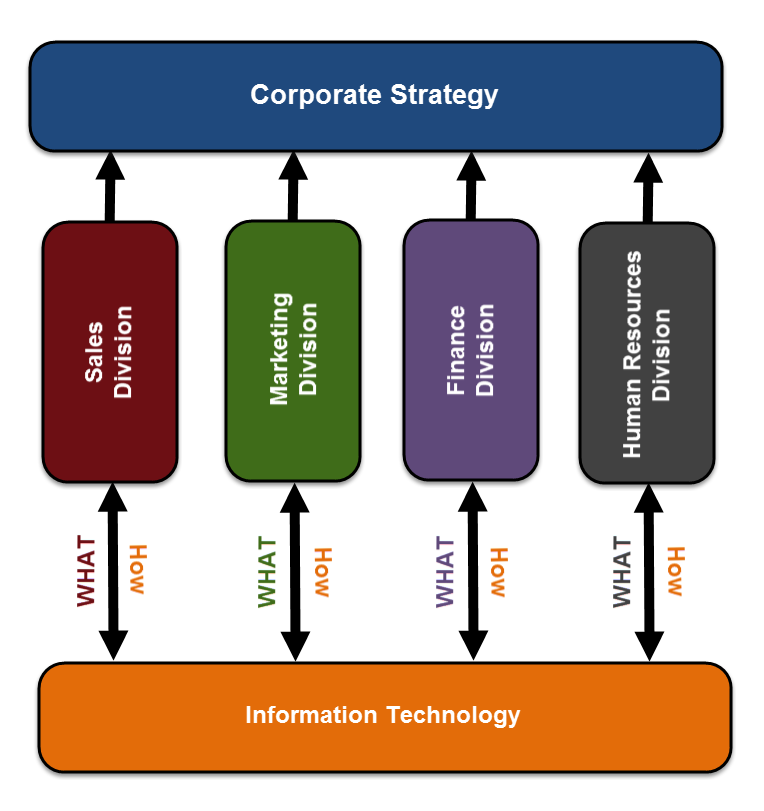A recent Gartner survey revealed a striking statistic: a mere 7% of CIOs believe their IT departments effectively demonstrate value to their organizations. The remaining 93% feel their teams are perceived primarily as cost centres. This disconnect poses a significant challenge for IT leaders seeking to maximize their impact. How can they effectively articulate the value of their IT organizations to the wider business?
The answer to the above question will be the focus of today’s post.
The Challenge
Traditionally, IT has operated in a reactive, tactical capacity, fulfilling business demands as they arise. However, the digital transformation revolution has elevated technology to a cornerstone of business models. Organisations that have embraced technology in their strategies have thrived, while those who haven’t have often struggled.
Despite this shift, many IT organizations find it difficult to engage effectively with the broader business. Technologists are often most comfortable discussing technology itself, while CEOs and business leaders are focused on challenges such as cash flow, market expansion, and shareholder value. To bridge this gap, IT must adopt a new approach.
How do we successfully engage with the business?
The How
Every organisation has a corporate strategy, set by the CEO or board of directors, outlining high-level goals such as maximizing customer satisfaction, increasing market share, or reducing operational costs. Beneath this corporate strategy lies a layer of divisional strategies, each aligned with the overarching corporate goals.
IT can demonstrate its value by enabling different business units to achieve their specific objectives through the strategic application of technology. This requires a deep understanding of the unique challenges and opportunities faced by each division.
“It is strictly business.”
In a recent engagement with a midsize organization facing agile competitors and shrinking margins, our team embarked on a series of discussions with the heads of each division. These conversations focused not on technology, but on business. We asked questions such as:
- What sales targets have you committed to the CEO this year?
- What challenges might prevent you from hitting those targets?
- Which competitors pose the greatest threat?
- What advantages do those competitors enjoy?
By gaining a thorough understanding of the business needs of each division, we were able to formulate a technology strategy that directly addressed those needs.
The Results
- Sales: A new mobile app empowered sales representatives to provide price quotes to customers within 20 minutes, significantly improving responsiveness.
- Finance: Automation of low-value administrative tasks freed up staff to focus on strategic priorities.
- Human Resources: AI-powered recruitment tools streamlined the hiring process, enabling HR to focus on more strategic talent acquisition initiatives.
By prioritising business needs, technology became a powerful enabler, driving tangible results across the organization.
By focusing on the business first, technology had a powerful impact.
I realise I am oversimplifying the process. I had to use SWOT analysis, OGSM strategy framework amongst other tools to get the business insight I needed. But it all started with a simple business conversation.
The Covid-19 Imperative: Seizing the Opportunity
The COVID-19 pandemic has disrupted business models across industries, forcing organizations to adapt rapidly to new challenges and opportunities. Field sales teams have been grounded, supply chains have been disrupted, and customers have shifted en masse to digital channels.
This crisis has underscored the importance of IT’s ability to understand business challenges and facilitate the necessary changes. By adopting a problem-solving mindset and aligning technology with business strategy, CIOs can transform their IT organizations from cost centers to strategic partners, driving innovation and resilience in the face of unprecedented disruption.
As John F. Kennedy said, “The Chinese use two brush strokes to write the word ‘crisis. ‘ One brush stroke stands for danger; the other for opportunity. In a crisis, be aware of the danger but recognize the opportunity.” The shift from a technology-focused mindset to a problem-solving mindset is what differentiates the 7% of CIOs who effectively demonstrate IT’s value from the 93% who do not.
“The Chinese use two brush strokes to write the word ‘crisis. ‘ One brush stroke stands for danger; the other for opportunity. In a crisis, be aware of the danger but recognize the opportunity.”
John F. Kennedy
I hope you have found the post informative and thank you for reading and sharing.
Regards,
Nick





Travis
April 21, 2020Great insight nick. Give me a call when back in DC.
Virtual Tarzan
April 21, 2020Thank you, Travis, much appreciated. You are on my speed dial!
Mark
April 30, 2020You are right, the skill to translate business needs to IT requirments is not a common skill in IT. It should be a core skill we develop